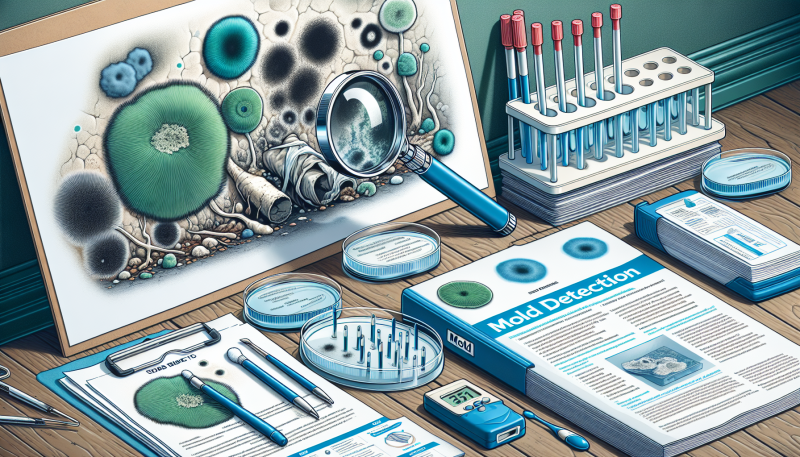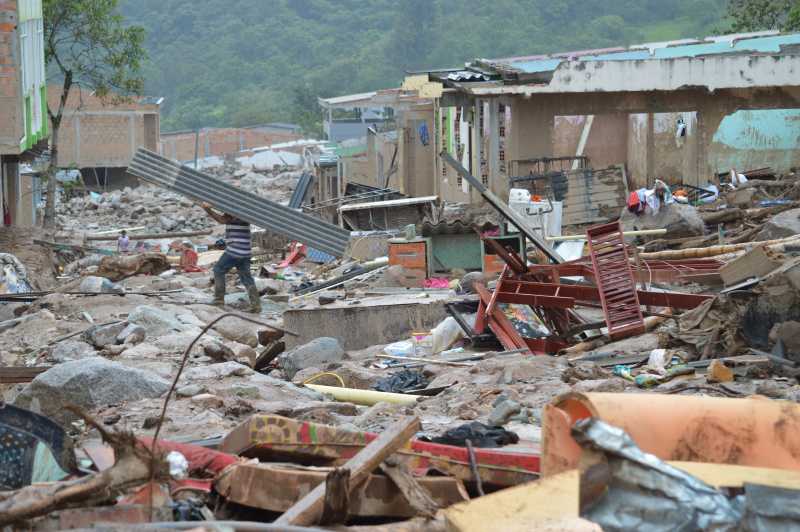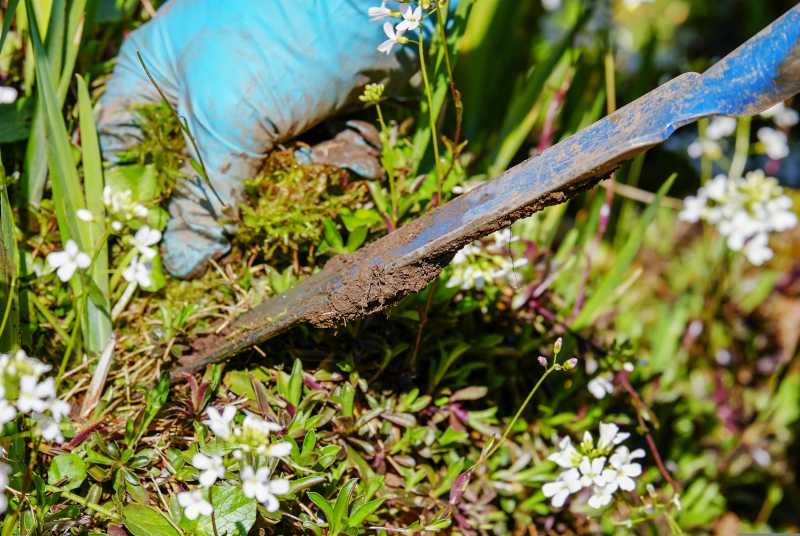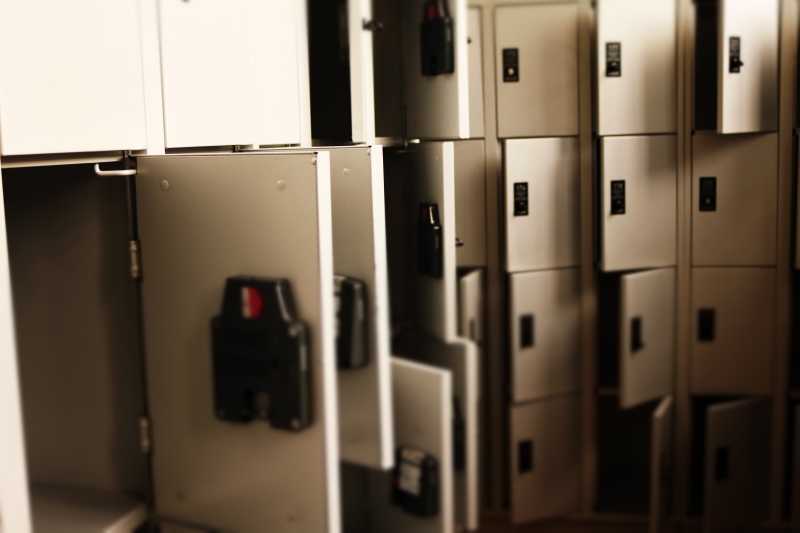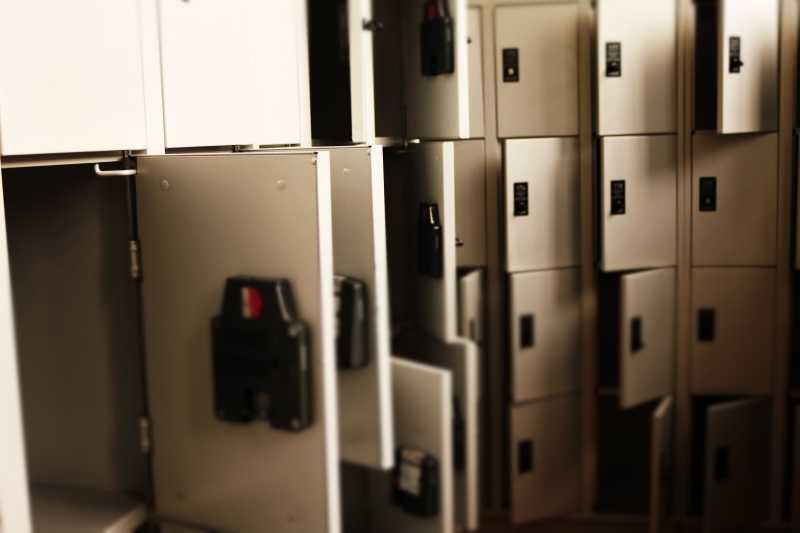Experiencing a flood can be a daunting and overwhelming experience. Knowing what to do after a flood can help you regain control and minimize the damage to your property. At Steamaster, we understand the urgency and complexity of water damage restoration. That’s why we’ve put together this comprehensive guide to help you navigate the aftermath of a flood. We’ll walk you through the necessary steps for water removal, dealing with fire and storm damage cleanup, mold removal, and more. Our emergency services are available 24/7 to ensure you get the help you need when you need it. With our expertise in water damage restoration, we aim to provide you with valuable insights and practical tips to help you recover from a flood effectively and efficiently.
Understanding the Immediate Aftermath of a Flood
The immediate aftermath of a flood can be overwhelming and disorienting. It’s crucial to understand what happens during this period to ensure your safety and the preservation of your property. The first 24-48 hours following a flood are the most critical, and your actions during this time can significantly impact the recovery process.
Floodwaters can cause extensive damage to your home and belongings. The water can seep into walls, floors, and furniture, causing them to warp or rot. It can also lead to the growth of mold and bacteria, posing a serious health risk. According to the Centers for Disease Control and Prevention, exposure to mold can cause respiratory issues, skin irritation, and other health problems.
“Exposure to damp and moldy environments may cause a variety of health effects, or none at all. Some people are sensitive to molds. For these people, exposure to molds can lead to symptoms such as stuffy nose, wheezing, and red or itchy eyes, or skin.”
Source: CDC
In addition to property damage and health risks, floods can also disrupt essential services such as electricity, gas, and water supply. It’s important to contact your utility providers immediately to report any disruptions and ensure your safety.
After a flood, it’s crucial to document the damage for insurance purposes. Take photographs and make a list of damaged items, including their value. This will help expedite your insurance claim and ensure you receive the compensation you’re entitled to.
- Photograph the damage: Capture images of your home and belongings from different angles to provide a comprehensive view of the damage.
- List damaged items: Include details such as the item’s brand, model, and estimated value. If possible, provide receipts or other proof of purchase.
Once you’ve documented the damage, it’s time to start the cleanup process. This can be a daunting task, especially if you’re dealing with extensive damage. Professional cleaning and restoration services, such as Steamaster’s water damage repair and mold removal, can help restore your home to its pre-flood condition.
It’s also important to take steps to prevent future floods. This includes maintaining your home’s drainage system, installing a sump pump, and keeping valuable items on higher levels of your home. For more tips on preventing floods, check out our blog.
In conclusion, understanding the immediate aftermath of a flood is crucial for ensuring your safety and the preservation of your property. By taking the right steps, you can minimize the impact of the flood and expedite the recovery process.
Ensuring Personal Safety Post-Flood
When a flood has occurred, the immediate aftermath can be overwhelming. However, it is crucial to prioritize personal safety above all else. The first step is to ensure that it is safe to return to your home. Local authorities will typically provide this information. If you’re unsure, it’s best to stay away until you receive confirmation.
Once you’ve been given the all-clear, it’s important to be cautious as you return to your property. Floodwaters can cause significant structural damage, making buildings unstable. Be aware of potential hazards such as collapsed roofing materials or damaged floors. It’s also crucial to be mindful of electrical and fire risks. If you suspect any damage to your electrical system, contact a professional immediately.
Floodwater can also pose a significant health risk. It often contains sewage and other contaminants, making it hazardous to come into contact with. If you must enter floodwater, ensure you’re wearing protective clothing, including waterproof boots and gloves.
After a flood, it’s also important to check for signs of mold. Mold can grow quickly in damp conditions and can cause health problems. If you suspect mold, it’s best to seek professional help. Our mold remediation services can help ensure your home is safe and mold-free.
Another key aspect of personal safety post-flood is ensuring your water supply is safe. Floodwater can contaminate drinking water supplies, so it’s essential to have your water tested before use. In the meantime, use bottled water for drinking and cooking.
It’s also important to take care of your emotional wellbeing. Experiencing a flood can be traumatic, and it’s normal to feel a range of emotions in the aftermath. Reach out to local support services if you need help coping.
In addition to these steps, it’s crucial to document the damage for insurance purposes. Take photographs and make a list of damaged items. Our water damage repair services can help restore your home and belongings.
Finally, consider seeking professional help for the clean-up process. Flood clean-up can be a daunting task, and professional services can ensure it’s done safely and effectively. Our sanitation services can help make your home safe and habitable again.
In conclusion, personal safety post-flood involves a range of steps, from ensuring structural safety to protecting your health and wellbeing. By being cautious and seeking professional help where needed, you can navigate the aftermath of a flood safely and effectively.
Assessing the Extent of Flood Damage
In the aftermath of a flood, it is crucial to accurately evaluate the extent of the damage to your property. This process involves a thorough inspection of your home and its surroundings to identify the areas affected by the floodwaters. The first step is to ensure your safety. Before entering your home, make sure it is structurally sound and there are no electrical hazards.
Once you have confirmed it is safe, begin by inspecting the exterior of your property. Look for visible signs of damage such as cracks in the foundation, collapsed walls, or damaged roofing. Document these findings with photographs and notes for insurance purposes.
Next, move on to the interior of your home. Start from the ground floor and work your way up. Pay special attention to the walls, floors, and ceilings for signs of water damage. This could include discoloration, warping, or mold growth. Don’t forget to check your basement, as this area is often the most affected by flooding.
In addition to structural damage, you should also assess the state of your personal belongings. Furniture, electronics, and other household items may have been damaged by the floodwaters. Again, document everything for insurance purposes.
It’s important to note that not all damage is immediately visible. Some effects of flooding, such as mold growth, may not become apparent until days or even weeks after the event. Therefore, it’s recommended to hire a professional water damage repair service to conduct a thorough inspection and remediation.
These professionals have the necessary training and equipment to detect hidden damage and potential hazards. For instance, they can use moisture detection tools to identify areas of your home that are still damp and at risk of mold growth.
Once the extent of the damage has been assessed, you can start planning the necessary repairs and cleaning. Depending on the severity of the damage, this could involve anything from simple cleaning and drying to complete home reconstructions.
Remember, the sooner you start the assessment and repair process, the better. Delaying could lead to further damage and potential health risks. Therefore, it’s crucial to act quickly and efficiently in the aftermath of a flood.
In conclusion, assessing the extent of flood damage involves a thorough inspection of your property, documenting the damage for insurance purposes, and hiring professionals to detect hidden damage and conduct necessary repairs. By following these steps, you can ensure a swift and effective recovery from a flood event.
Cleaning and Sanitizing Your Home After a Flood
Experiencing a flood can be a traumatic event, and the aftermath can be overwhelming. However, it’s crucial to act promptly to mitigate the damage and ensure your home is safe and clean. One of the most critical steps in the recovery process is cleaning and sanitizing your home.
After a flood, your home may be contaminated with various harmful substances, including bacteria, viruses, mold, and other pathogens. These contaminants can pose serious health risks if not properly addressed. Therefore, it’s essential to thoroughly clean and sanitize all affected areas.
Begin by removing all water-damaged items from your home. This includes furniture, carpets, and other household items. Some items may be salvageable through professional cleaning services, while others may need to be discarded.
Next, dry out your home as quickly as possible to prevent mold growth. This can be done using fans, dehumidifiers, and heaters. However, for severe flooding, it may be necessary to hire a professional water damage restoration service.
Once your home is dry, you can begin the cleaning process. Use a solution of warm water and heavy-duty cleaner to scrub all surfaces. Pay special attention to areas that may be hard to reach, such as corners and crevices.
After cleaning, it’s time to sanitize. Sanitizing kills any remaining bacteria, viruses, or other pathogens that may be present. You can use a solution of bleach and water for this purpose. However, be sure to wear protective clothing and ventilate the area well.
Remember, cleaning and sanitizing after a flood is a labor-intensive process that requires a lot of time and effort. If you’re not up to the task, or if the damage is extensive, it may be best to hire a professional sanitation service.
In addition to cleaning and sanitizing, it’s also important to check for any structural damage that may have occurred during the flood. This includes checking for cracks in the walls and foundation, as well as any damage to the electrical system. If you notice any such issues, contact a professional immediately.
Finally, take steps to prevent future flooding. This may involve installing a sump pump, improving your home’s drainage system, or even relocating if your home is in a high-risk flood area.
Remember, the goal is to restore your home to a safe, clean, and comfortable living environment. With patience, diligence, and the right resources, you can successfully clean and sanitize your home after a flood.
For more information on cleaning and sanitizing after a flood, or to schedule a professional cleaning service, contact us at Steamaster Clean. We’re here to help you every step of the way.
Dealing with Insurance and Financial Matters
In the aftermath of a flood, it’s crucial to address insurance and financial matters promptly and effectively. This process can be overwhelming, but understanding the steps to take can significantly ease the burden.
Firstly, it’s essential to contact your insurance provider as soon as possible. Inform them about the incident and ask about the next steps. Your insurance policy may cover flood damage, but it’s important to clarify the extent of the coverage. If you have flood insurance, you should file a claim immediately. Document the damage extensively, taking photographs and making lists of damaged items. This evidence will be invaluable when negotiating with your insurance company.
If you don’t have flood insurance, there are still options available. You may be eligible for disaster assistance from the Federal Emergency Management Agency (FEMA) or low-interest disaster loans from the U.S. Small Business Administration. These resources can provide financial relief and help you start the recovery process.
Next, consider hiring a professional water damage repair service. These experts can assess the damage, provide a cost estimate, and perform necessary repairs. This can be particularly helpful when dealing with extensive damage that requires specialized equipment and expertise. The cost of these services may be covered by your insurance policy, so it’s worth discussing this with your provider.
In addition to repairing physical damage, you may also need to address financial issues related to the flood. This could include replacing lost income if you’re unable to work, or covering additional living expenses if your home is uninhabitable. Your insurance policy may provide coverage for these costs, but if not, you may need to explore other financial assistance options.
It’s also important to consider the long-term financial implications of a flood. This could include increased insurance premiums, decreased property value, or potential health issues resulting from exposure to contaminated water or mold. To mitigate these risks, consider investing in preventative measures such as moisture detection systems or professional mold remediation services.
Finally, remember that dealing with insurance and financial matters after a flood can be a complex process. It’s important to stay organized, keep detailed records, and seek professional advice if needed. By taking these steps, you can navigate this challenging situation and start the recovery process with confidence.
Restoring Your Home: Repair and Renovation Tips
After a flood, the process of restoring your home can seem overwhelming. However, with the right information and resources, you can navigate this challenging time and bring your home back to its former glory. Here are some repair and renovation tips to help you on your journey.
Firstly, it’s crucial to assess the extent of the water damage. This involves identifying the areas of your home that have been affected by the flood and determining the severity of the damage. You can do this by looking for signs of water damage such as discoloration, warping, and mold growth. If you’re unsure, consider hiring a professional to conduct a thorough moisture detection assessment. This will help you understand the full extent of the damage and plan your restoration efforts accordingly.
Next, you’ll need to dry out your home. This is a critical step in preventing further damage and mold growth. Use fans, dehumidifiers, and heaters to speed up the drying process. If the damage is extensive, you may need to consider professional home reconstructions services.
Once your home is dry, you can begin the repair and renovation process. This may involve replacing damaged drywall, flooring, and other structural elements. It’s important to ensure that all repairs are done to a high standard to prevent future issues. If you’re not comfortable doing these repairs yourself, consider hiring a professional.
In addition to structural repairs, you’ll also need to clean and restore your belongings. This may involve deep cleaning of home upholstery and other items that have been affected by the flood. Again, if the damage is extensive, you may need to consider professional services.
Finally, consider taking steps to prevent future flooding. This may involve improving your home’s drainage system, installing a sump pump, or making landscaping changes to direct water away from your home.
Remember, restoring your home after a flood is a marathon, not a sprint. It’s important to take your time and ensure that all repairs and renovations are done correctly. With patience and perseverance, you can restore your home and make it a safe and comfortable place to live once again.
Throughout this process, don’t hesitate to reach out for help. There are many resources available to assist you, from professional restoration services to helpful guides and tips. By taking advantage of these resources, you can navigate the restoration process with confidence and ease.
Preventive Measures: How to Prepare for Future Floods
In the aftermath of a flood, it’s crucial to take steps to prevent future damage. The first step in this process is understanding the potential risks and vulnerabilities of your property. This involves assessing the landscape, the structure of your home, and the local climate. A professional assessment can provide valuable insights and recommendations. For instance, moisture detection can help identify areas prone to water accumulation and leakage, which can be critical in flood-prone regions.
Once you understand the risks, you can take action to mitigate them. This may involve installing flood barriers, improving drainage systems, or even relocating vulnerable parts of your property. It’s also important to ensure your home is properly insulated and sealed to prevent water ingress. Regular maintenance and checks can help identify potential issues before they become serious problems.
Another key aspect of flood preparation is having a comprehensive emergency plan. This should include evacuation routes, emergency contacts, and a list of essential items to take with you in case of a flood. It’s also advisable to have a move and pack out plan in place, so you can quickly and efficiently evacuate your home if necessary.
Insurance is another important consideration. Make sure your policy covers flood damage, and understand the terms and conditions. It’s also worth considering additional coverage for high-value items. Keep an inventory of your possessions, ideally with photographs, as this can make the claims process easier.
In addition to these measures, it’s important to stay informed about potential flood risks. This includes monitoring local weather forecasts and flood warnings, and being aware of the signs of an impending flood.
Regular sanitation is also crucial, as floods can bring in a host of contaminants and diseases. Regular cleaning and sanitation can help keep your home safe and healthy.
Finally, consider seeking professional help for flood preparation. Companies like Steamaster offer a range of services, from water damage repair to mold remediation, which can help you prepare for and recover from a flood. They can provide expert advice and practical assistance, helping you to protect your home and your loved ones from the devastating effects of flooding.
In conclusion, preparing for future floods involves a combination of understanding your risks, taking practical steps to mitigate them, having a comprehensive emergency plan, ensuring you have adequate insurance, staying informed about potential risks, maintaining good sanitation practices, and seeking professional help where necessary. By taking these steps, you can help to protect your home and your loved ones from the devastating effects of flooding.
In conclusion, dealing with the aftermath of a flood can be a daunting task. However, with the right knowledge and preparation, it is possible to navigate through this challenging time effectively. This comprehensive guide has provided you with a step-by-step approach on what to do after a flood, from ensuring your immediate safety to restoring your home and dealing with insurance claims. Remember, it’s crucial to stay calm, act promptly, and seek professional help where necessary. With resilience and patience, you can overcome the challenges brought about by a flood and restore normalcy to your life.



